“If we were allowed to be her caregivers, our quality of life (and most importantly HER QUALITY of life) would drastically increase. ” — anonymous survey respondent
I’ll say one thing about COVID-19 — the threat of illness or death changed a lot of people’s seemingly unalterable beliefs overnight.
Companies that had refused to give flexible work options suddenly found ways for their employees to work out of the office at all hours. Governments that were tied to slow, plodding processes and monolithic policies suddenly found loopholes and exceptions. Families that couldn’t imagine any other way to live, suddenly found other ways.
This is a phenomenon the parent-caregiver community was already familiar with. Parents of children with severe disabilities have already had to reimagine every aspect of their lives.
A serious medical diagnosis for a child has massive impacts on the entire family. It is an emergency declaration on a personal scale.
This week, the federal public health emergency declaration was renewed for what many hope will be the final time as we finally put the pandemic in the rearview mirror. Meanwhile, millions of families fear they will lose the general public’s understanding that the same flexibilities and supports are needed during personal health emergencies. There is no “going back” for us.
The federal government’s emergency declaration made a lot of new funding available and many new policies possible, including a temporary program in several states to allow parents the ability to apply for the job of an in-home caregiver for their own disabled child. This is not normally allowed in states like Oregon, but is in neighboring California.
After Health and Human Services Secretary Xavier Becerra announced the emergency extension to July 15, Oregon advised parents who were receiving this money to prepare themselves for when it ends. The message from Office of Developmental Disability Services Director Lilia Teninty advises parents to “work with their services coordinators to prepare for the transition back to using other” caregivers. It is unclear what that means as provider agencies throughout the state have said for years — long before COVID — that they have nowhere near the labor force required to fill these positions. In COVID’s shadow, the national caregiver and health care worker shortage is even more vast and well-documented.
To show the impact of the temporary paid parent-caregiver program in Oregon, an ad hoc group of parents I’m a part of conducted a survey. It managed to capture 94 families who said they were among the few hundred in Oregon who qualified for paid parent-caregiving during the pandemic.
Their responses are stunning in illustrating the success of this program among our state’s most medically complex children. It has transformed their lives — 13 of the families were saved from the brink of homelessness, half of families reduced their need for other public assistance programs, hospitalizations dropped dramatically and the vast majority of families reported their children were happier, healthier and more included in their communities. This policy started halfway through the pandemic so the reported effects are not due to COVID-19 restrictions.
Below, you can see an infographic on the data from Oregon Advocates for Equitable Disability Services but I’ll also summarize here:
• 90.3 percent of respondents said their child’s physical health improved
• 89.2 percent of respondents said their child’s mental health improved
• Before the program, many of these children spent days and days in the hospital. Seventy-two families said their children were hospitalized one or more days every year on average before the program, 15 of those for 10 days or longer. After the program? The number of children who did not need to visit the hospital at all nearly doubled. Only 32 needed hospitalization, and only four of those were for 10 days or more.
• 69.9 percent said their child was more included in the community after the program and 28 percent said it was about the same. Only 2.2 percent reported less inclusion (though one of those two respondents said they used the money to buy an accessible van… to move about in the community, I would presume).
• Families were on a wide range of public assistance programs prior to this income — more than half said they were able to reduce their reliance on those.
• What about the narrative of greedy parents taking up all the hours? Most (58.5 percent) continued to hire outside providers and those who didn’t mostly said it was because they couldn’t find anyone or they were too worried about infections.
• All families reported improvement in financial freedom. Before the program, 13 said they were practically homeless and another 38 said they were only a step away.
In addition to the families who qualified, the survey received feedback from 44 other families who did not qualify or chose not to participate. There were some like this parent who had a nuanced take:
“I never received any childcare help for my severely disabled nonverbal daughter and in fact paid more out of pocket for caregivers than I did for all expenses for my business, as well as reducing hours worked out of necessity, trying to hire and manage care for all my daughter's needs. I do, however, feel positive about the idea that I had to hire someone else and did not have the option to just stay home and get paid to be there because it meant that I was more fresh for my daughter when I was with her and dropping the juggle might have been enticing but not the best solution for my daughter's needs. This may be different for others.”
Most, though, strenuously argued for an expanded and permanent option for paid parent-caregivers.
“I have two children who receive hours but individually they don't have enough to qualify, but added together they would. Our household has had to completely revamp our careers and incomes to support our kids. We have cut expenses so much we were able to survive on $17,000 one year. Between both parents’ careers before kids we were making $100,000. It would change our lives again if we could be paid caregivers.”
This one broke my heart:
“I work part time as a school counselor. Each day that I go to work, I wonder if this is going to be the last day or week that I'm able to work. I'm running on fumes fueled by fumes. My emotional and physical reserves are shot. Six months before the pandemic, my child was 2.5, and was diagnosed with type 1 diabetes. Six months after that, she was diagnosed as autistic. She requires around the clock medical care. One night last week I got up 10 times to treat her blood sugars, and then went to work the next morning. There has been one night in the last week that I was able to sleep from 11 pm - 6 am without getting up to care for her blood sugar. Our family relies on my part-time income to stay afloat, but if I was paid as her caregiver, both she and I would have a better quality of life. She qualifies for 168 hours of care per month, but she's 5 and wants to be with her Mom. Like most autistic individuals, she co-regulates off of her primary caregiver, and she thrives when we are together. She has a wonderful caregiver that is with her 20 hours/week, but more than that and she would be dysregulated and unhappy. We are a very middle class family and are barely getting by having to pay for all of her needs, medical supplies, etc. If we were allowed to be her caregivers, our quality of life (and most importantly HER QUALITY of life) would drastically increase. She is a bright rainbow star of a child who has so many wonderful gifts and insights to offer the world. She deserves the best care, just like any other child. Please consider allowing parents to be paid caregivers for their children with disabilities.”
Several people also mentioned that they hadn’t been part of the program because their case manager never told them that it existed, that their housing or other life-saving assistance would have been terminated for a program that would last only a few months, or because their young disabled children simply haven’t made it through the lengthy process to qualify for services yet.
Some say if this program isn’t made permanent, they will be forced to give up their child to medical foster care (where they will be cared for by others who will be paid by the government). Others say they will move out of state to a place like California, Colorado or Arizona where parent-caregivers are able to be paid.
Next week, I will present the story of one such mom — someone who says her daughter will have to be institutionalized if this program ends because she has no other choice.
I and many other parents refuse to accept that these emergency policies can’t change forever. The public health crisis doesn’t end for our families. Let’s continue to push for policies that are working.
From Oregon Advocates for Equitable Disability Services
Medical Motherhood’s news round up
Snippets of news and opinion from outlets around the world. Click the links for the full story.
• From TIME: “As COVID-Era Restrictions End, Disabled Americans Want to Avoid a 'Return to Normal'“
“What was considered ‘normal’ was actually not a great way to live, often,” says [Kim] Knackstedt, who served as the first White House director of disability policy, before leaving the administration on March 11. “It wasn’t accessible. It actually didn’t provide all of the things that we needed to get even basic health care, and so many other things, like basic economic security.”
[…]These fears are why Knackstedt and the other disability advocates are launching a new initiative on April 21, the Disability Economic Justice Collaborative, which is designed to reach outside the disability community, into establishment policy making circles. The collaborative includes think tanks like The Century Foundation and the Center for American Progress, as well as more than two dozen other organizations across the progressive policy spectrum, such as the Center on Budget and Policy Priorities, National Partnership for Women and Families, Justice in Aging, the Urban Institute, the Food Research and Action Council, and Data for Progress.
[…]Advocates say the large number of people affected by COVID could make it hard to ignore. More than 980,000 people have died in the U.S., and many more are grieving them. As of March, there were more than 1 million disability benefits cases pending with the Social Security Administration. Even if people don’t enjoy thinking about these statistics, they are having a significant impact on the American psyche and the country’s economy. “My hope is that as we are continuing to beat the drum on long COVID,” says Mia Ives-Rublee, director of the Disability Justice Initiative at the Center for American Progress, “it brings some attention to some programs that have been left to wither on the vine.”
• From Disability Scoop: “How Parenting Kids With Disabilities Affects Marriage”
Parents of children with developmental disabilities experience varying levels of stress, but new research suggests that some key factors influence how much their kids’ needs affect their marriage.
The study looked at the experiences of 213 couples living in the U.S. and Canada who were surveyed, about half of whom had a child with autism while the other half had a child with Down syndrome.
Among parents of those with autism, nearly a quarter of mothers and 20% of fathers said their marriages were distressed. By contrast, in the families of children with Down syndrome, just 10% of mothers and 2% of fathers said the same.
“There could be many reasons for these percentage differences,” said Tina Taylor of Brigham Young University, a co-author of the study published recently in the journal Intellectual and Developmental Disabilities. “These data point to not only a ‘Down syndrome advantage’ but a possible ‘husband advantage.’ One possible explanation is that husbands may not be as directly involved with daily caregiving responsibilities. Because parents’ experiences are interconnected, this warrants further investigation.”
• From The Statehouse News Bureau (Ohio): “Advocates worry new law could lead to vulnerable Ohioans being kicked off Medicaid”
In the budget that passed last year, state lawmakers included an order that Medicaid hire an outside contractor to do an eligibility check on all recipients. And [Former Ohio Medicaid director John] Corlett said the way that contractor, PCG, earns its money is to find savings for the state – and he notes people who are elderly and/or disabled are the most costly to Medicaid.
“And the group that they are sort of rewarded the most financially because the savings are the largest are aged and disabled people, disabled children. That's where the state spends the most money. That's where there could be the most savings," Corlett said. "And so it creates, I think, a strange incentive to sort of maybe try and push people off rather than figure out how do we keep people on.”
Medical Motherhood is a weekly newsletter giving those raising disabled children the news and information they need to navigate complex systems. Get it delivered to your inbox each Sunday morning or give a gift subscription. Subscriptions are free, with optional tiers of support. Thank you to our paid subscribers!
Follow Medical Motherhood on Facebook, Twitter, TikTok, Spotify, Apple Podcasts, or Instagram or, visit the Medical Motherhood merchandise store to get a T-shirt or mug proclaiming your status as a “medical mama” or “medical papa.”
Do you have a question about raising disabled kids that no one seems to be able to answer? Ask me and it may become a future issue.


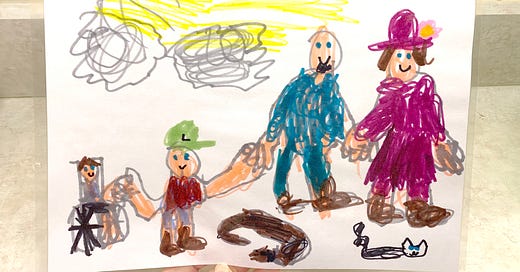






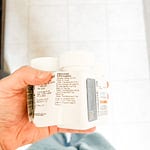

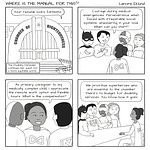

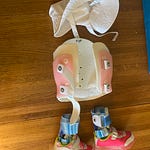

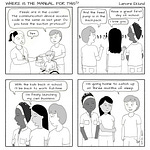

Share this post